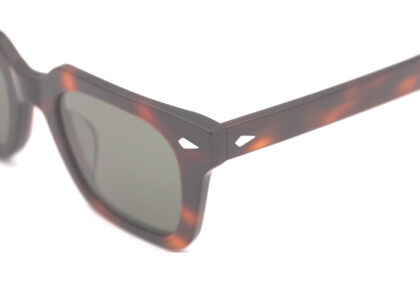Understanding Your Prescription
Before delving into the world of frames and styles, it’s essential to understand your prescription. Your prescription will determine the type of lenses you need, including whether you require single vision, bifocal, or progressive lenses. Ensure you have your prescription handy when shopping for eyeglasses to guarantee accurate vision correction.
Consider Your Face Shape
One of the most critical factors to consider when choosing eyeglasses is your face shape. Different frame shapes and styles complement various face shapes, so it’s crucial to identify yours before making a selection. Here’s a breakdown of some common face shapes and the frames that flatter them:
1. Oval Face:
- Lucky you! Oval faces are versatile and can pull off almost any frame style. Experiment with bold shapes and colors to showcase your personality.
2. Round Face:
- Angular frames, such as rectangular or square-shaped, can help add definition to a round face. Look for frames that are wider than they are tall to elongate the face.
3. Square Face:
- Round or oval frames soften the angles of a square face, creating a balanced look. Steer clear of overly geometric shapes that may emphasize angular features.
4. Heart Face:
- Cat-eye or oval frames complement heart-shaped faces by balancing the width of the forehead with the narrowness of the chin.
5. Diamond Face:
- Rimless or oval frames are ideal for diamond-shaped faces, as they highlight the cheekbones and soften the overall appearance.
Choosing the Right Frame Material
Once you’ve determined your face shape, it’s time to consider frame materials. Eyeglass frames come in various materials, each with its unique benefits:
- Metal Frames: Metal frames, such as titanium or stainless steel, are durable, lightweight, and hypoallergenic. They offer a sleek and modern aesthetic.
- Plastic Frames: Plastic frames, including acetate and cellulose acetate, are available in a wide range of colors and patterns. They’re lightweight and comfortable to wear, making them a popular choice for fashion-forward individuals.
- Mixed Material Frames: Combining metal and plastic elements, mixed material frames offer the best of both worlds—durability, versatility, and style.
Finding the Right Fit
In addition to choosing frames that complement your face shape and style preferences, it’s crucial to ensure a proper fit. Ill-fitting eyeglasses can cause discomfort and may not provide
adequate vision correction. Here are some tips for finding the right fit:
- Frame Width: The width of the frame should be proportional to the width of your face. Ensure that the frames neither squeeze nor slide off your face.
- Bridge Fit: The bridge of the glasses should rest comfortably on your nose without causing any pressure points or slipping down.
- Temple Length: The temple arms should extend straight back and rest comfortably behind your ears. They shouldn’t press too tightly against your head.
- Lens Height: The height of the lenses should be appropriate for your eyes and allow for clear vision without obstructing your line of sight.
- Overall Comfort: Pay attention to how the glasses feel on your face. They should feel secure without causing any pain or discomfort, even after extended wear.
Personal Style and Preferences
While functionality and fit are essential factors to consider when choosing eyeglasses, don’t forget to express your personal style! Your eyeglasses are a reflection of your personality and can make a fashion statement. Whether you prefer classic and understated frames or bold and trendy designs, there’s a perfect pair of eyeglasses out there for you.
Consider factors such as color, pattern, and detailing when selecting frames that align with your style preferences. Don’t be afraid to step out of your comfort zone and try something new—experimenting with different frame styles can be fun and empowering.
Additional Features and Considerations
Beyond the basics of prescription, face shape, fit, and style, there are additional features and considerations to keep in mind when choosing eyeglasses:
- Lens Coatings: Consider adding lens coatings such as anti-glare, scratch-resistant, or blue light-blocking coatings for added protection and comfort.
- Transitions Lenses: Transitions lenses darken in response to sunlight, providing UV protection outdoors and clear vision indoors. They offer convenience and versatility for individuals who frequently transition between indoor and outdoor environments.
- Specialty Lenses: Depending on your lifestyle and visual needs, you may benefit from specialty lenses such as high-index lenses for thinner and lighter glasses, polarized lenses for reduced glare, or photochromic lenses for variable tinting in changing light conditions.
Conclusion
Choosing the perfect pair of eyeglasses is a personalized process that involves considering various factors, including your prescription, face shape, style preferences, and additional features. By understanding your needs and exploring your options, you can find eyeglasses that not only enhance your vision but also complement your unique personality and lifestyle. Remember to prioritize comfort, functionality, and style to ensure a satisfying eyewear experience. With the right pair of eyeglasses, you can see the world clearly and confidently, all while making a statement that’s uniquely you.











